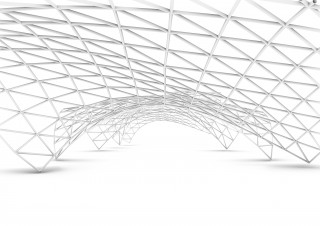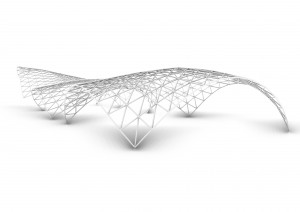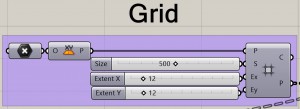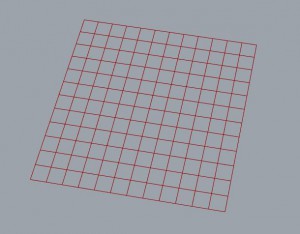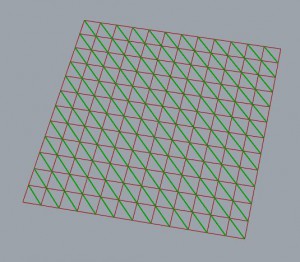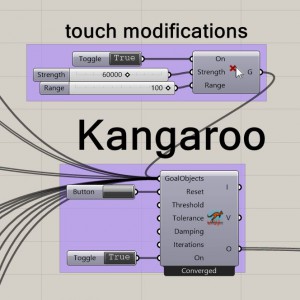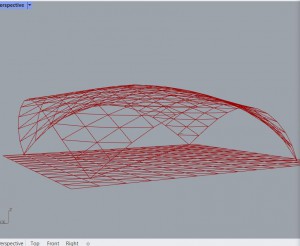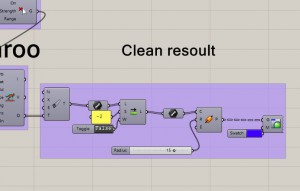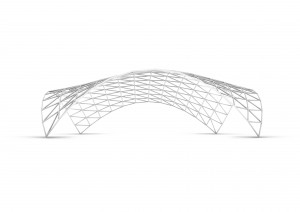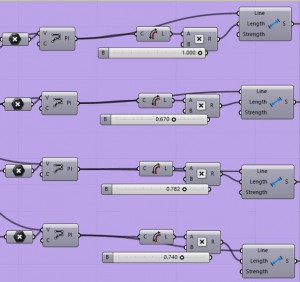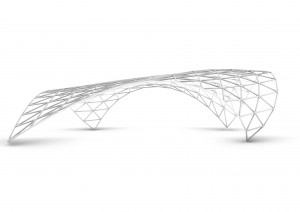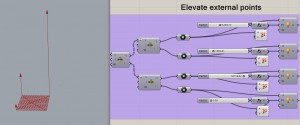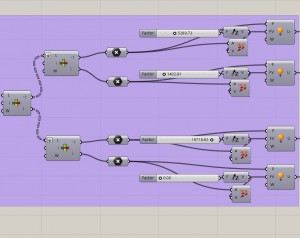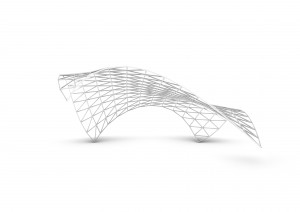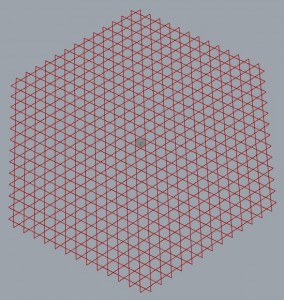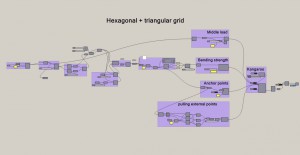GOALS
In my work, I want to experiment with the physics of gridshell structures, for that purpose, my intention was to create a pattern that could be easily built and simulate this building process of creating a planar grid and lifting it by pulling some of the external points while adding a pulling force somewhere in the middle of the structure. The triangular mesh helps when we need to panel the created planar surfaces. Using structural simulation components I found how to reach a stable form of a gridshell introducing different parameters that generate various results. The resulting script is a way of creating infinite gridshells, depending on the grid you use, how far you pull it´s external points and how high you move them. Being very useful to create gridshells able to adapt to different situations. The new input for improvement should be how to introduce it to different geometrical patterns.
SUMARY OF COMPONENTS
Firstly I used Square (SqGrd) and shift list as well as tree branch to create the grid.
The main component of the script is kangaroo´s bouncy solver, and the goal components that are required are Rod (for bending strength) Load, Anchor XYZ, Length (line), and Grab. These kangaroo2 components are created by Daniel Piker and can be found in food4rhino.
For cleaning the result I used clean tree, shift list, and to preview it, pipe with a custom preview (preview).
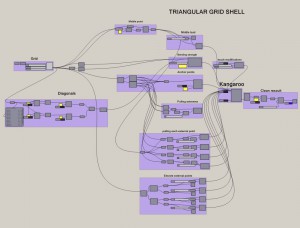 This is the general view of the script.
This is the general view of the script.
STEPS
1- Grid
Firstly we create a squared grid by a simple component.
2- Diagonals
Then, by working on the list of points, we create the diagonal lines to make a triangular grid.
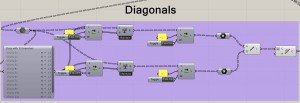
3- Kangaroo
We work now with kangaroo2´s component Bouncy solver, to reach a stable structure with some parameters given. I also introduced a parameter (Grab) that allows us to play with forms by grabbing the structure directly on rhinoceros.
kangaroo parameters (goal objects):
- Bending strength. The main characteristic of gridshells is how they work in bent forces. To reach a similar physical approach we apply bending strength to the segmented polylines that create the grid.
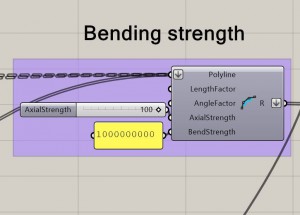

- Middle load.In order to lift the structure, this middle load is situated in the center of the structure.
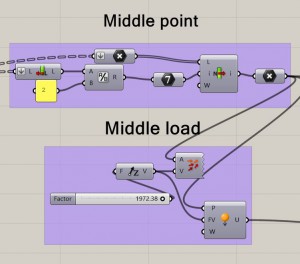

- Anchor points. To connect our structure with the ground we establish the extreme points as anchor points.
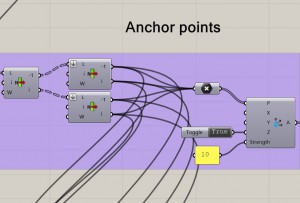

- Pulling extremes. Also in order to lift our structure, external points are joined together, this simulates the actual building process of a gridshell.
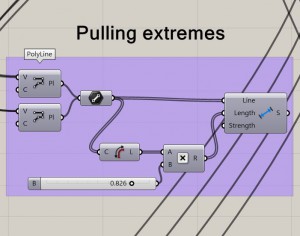

RESULT 1
Once we have our stable gridshell we can now clean the pulling lines and use a pipe generator to make a more realistic approach.
POSSIBILITIES
For different possibilities, I tried replacing the pulling extremes component.
RESULT 2 Pulling each external point.
By puling each point independently, we achieve asymmetrical structures based on the same principles.
RESULT 3 Elevate external points.
By lifting anchor points, using load component, we can get different curvatures that introduce more variants in the results. This could adapt to some existing architecture and create a nice covering.
Disclaimer- When obtaining these 2 last examples, there are 2 more lines created to pull each point, so in order to get a clear vision, we must write (-4) as the shift in the shifting list component to eliminate them from the preview. (When building the first structure we wrote -2 instead).
resulting script : Final project gridshell structure
UPGRADES
I also worked on further upgrades, I tried to incorporate this structural system into a polygonal grid, (both hexagonal and triangular) but it was unsuccessful, probably there is something wrong with one of the goal parameters of kangaroo. However, If anyone wants to keep working on it here is my final project and upgrades.
